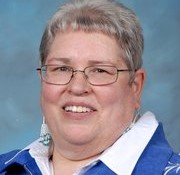Advance Care Planning to Prevent Elder Abuse
By Jacque Gray, PhD
March 1, 2023

Many people have heard of advance care planning or thought of doing it sometime, but they think they are too young, they don’t have time right now, or they need to think about it some more to know what they want to put into it. During the COVID-19 pandemic, people became more aware of how fragile life is and how quickly things could change. The National Indigenous Elder Justice Initiative (NIEJI) recently completed the My Advance Care Plan and Guide for Native Americans, a culturally relevant guide that can be completed online in a fillable PDF or printed out and completed by hand.
“One of the things that will play into how this plan will be used depends on their [older adults’] understanding of the issues,” said Tasha Peltier, community engagement advocate for Quality Health Associates of North Dakota. “In healthcare, health literacy is something we focus on. Making sure the patient understands the information we are giving them. This tool will be helpful, because a person may not know what information they should be thinking about or writing down. This asks the questions and guides them through the process. It outlines what things people should be talking about. Often people just don’t know where to start and that can be overwhelming.”
It is important to understand that the advance care plan can also provide protections from abuse, neglect, and financial exploitation of older and vulnerable adults. Although most of the information is for health care decisions, it also includes what is important to you, how you make decisions, what care and treatment you would like in the future, and what is important to you after your passing. This particular document was prepared for Native Americans and is more culturally relevant in the ideas, values, and beliefs of American Indian, Alaska Native, and Native Hawaiian people. Peltier noted, “The different language being used is helpful, looking at a spiritual journey or death. That language matters and it is helpful to have that incorporated into this plan. I am from Standing Rock (Indian Reservation), and we see death as a transition, we are all on a path and death is a transition to the next part of the journey. Not every tribe looks at it the same way, so I think those pieces are important.”
Our family and kin relationships are different than the Western immediate family and may include extended family or even unrelated individuals. “When you are looking at who should be making decisions, sometimes that looks different. Who in that tight-knit family will be making those decisions? It might not be a son or daughter. It might be a niece or nephew. It can get complex. They may be the oldest in that family. Having documents like this to help make the decisions is helpful. Even to outline, who should be making these decisions can be helpful.”
By identifying who the adult wants to make decisions if they are unable to do so, and guides them in the plan to help make those decisions, the vulnerable adult is more likely to have their wishes followed. By identifying by whom, where, and how they would like to be cared for there is less risk of abuse or neglect. By making sure the caregiver is separate from the financial manager, and that is separate from the person who audits expenses, provides more safeguards for the vulnerable adult.
Spiritual abuse is not considered in the types of abuse and neglect for most legal jurisdictions; however, it is important to many Native American vulnerable adults. Gray, LaBore, and Carter[i] defined spiritual abuse as “actions that damage one’s subjective experience and personal practice of the sacred, creating a severe disconnection with a higher power or other spiritual integrity, lack of access to spiritual resources to cope, and/or an inability to pursue spiritual growth.” Often the spiritual wishes and beliefs of Native Americans are not considered when they are receiving health care or home-based care because they are not understood by their providers.
Although this is not a legal document, it can help with the conversation in lay terms and give the individual an idea of what legal assistance they may need to put their ideas into place. Take the time to start identifying what is important to you and communicate it to your healthcare team, family, and friends.
My Advance Care Plan and Guide for Native Americans and additional trainings and materials from National Indigenous Elder Justice Initiative
[i] Gray, J. S., LaBore, K. B., & Carter, P. (2018, June 25). Protecting the Sacred Tree: Conceptualizing Spiritual Abuse Against Native American Elders. Psychology of Religion and Spirituality. http://dx.doi.org/10.1037/rel0000195
